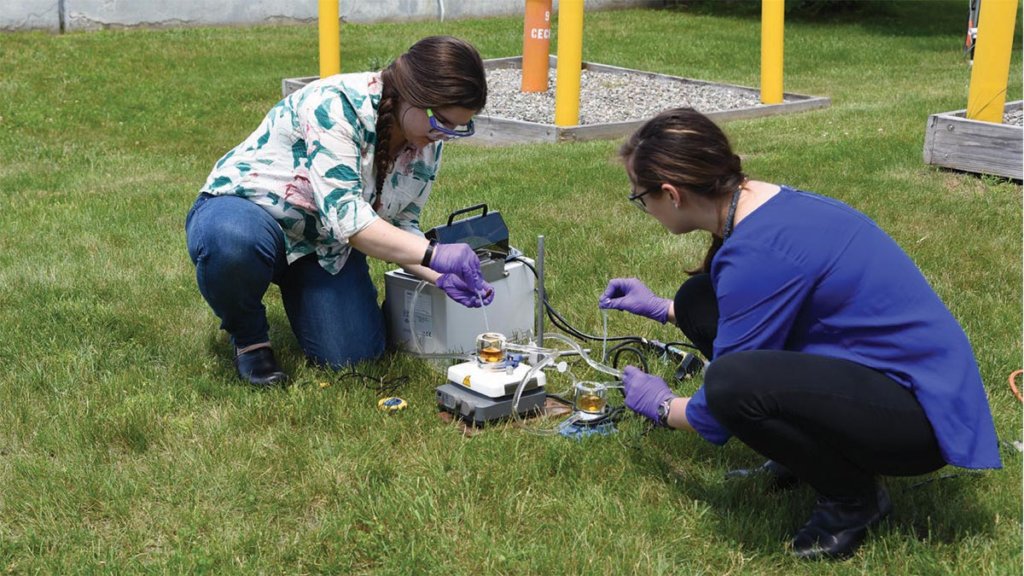Photocatalytic Water Treatment
Uses solar energy to remove dangerous microscopic contaminants from water

Innovators at ERDC’s Cold Regions Research and Engineering Laboratory have created multi-spectral photocatalytic compounds to remove microbes such as pharmaceuticals, pesticides, and personal-care products from wastewater. Conventional wastewater treatment processes leave trace amounts of these pollutants. These small, organic molecules can have adverse effects on the environment, such as aquatic life, and on public health. To make water potable and eco-friendly, even the smallest amounts of these contaminants must be eradicated.
This process uses photocatalysis — initiated by the introduction of one of several inexpensive, abundant metal oxides — to generate an electron-hole pair. The electron-hole pair then migrates to the material surface, where it reacts with the surrounding water and dissolved oxygen to form reactive oxygen species (ROS). By contributing to the oxidation of recalcitrant contaminants in solution, these ROS break down target contaminants using sunlight into benign byproducts. This tertiary treatment method removes toxic contaminants that other wastewater treatments leave behind.
Benefits:
- Low-cost: Relies on photocatalysts (zinc oxide, hematite, copper oxide) that are earth-abundant transition metal oxides
- Safe: Uses photocatalysts that are non-toxic with filterable particle diameters (> 0.1 μm)
- Efficient: Incorporates solar radiation, an energy-efficient means to remediate small molecule contaminants in water treatment
- Effective: Achieves measured contaminant degradation rates for nitrobenzene & carbamazepine equal to that of existing commercial systems
- Reliable: Can be used for effectively treating polluted water and air, industrial waste streams, and contaminated surfaces
Applications:
- Remediation (e.g., wastewater treatment, water treatment, water recycling)
- Military (e.g., bases, command centers, expeditionary forces)
- Public works (e.g., water treatment, water purification, wastewater treatment, water recycling)
- Paint (e.g., self-cleaning paints)
- EPA
- Oil & Gas (e.g., industrial waste streams)
- Advanced oxidation
- Agriculture

Patents
- 11298689 (Search patent)
